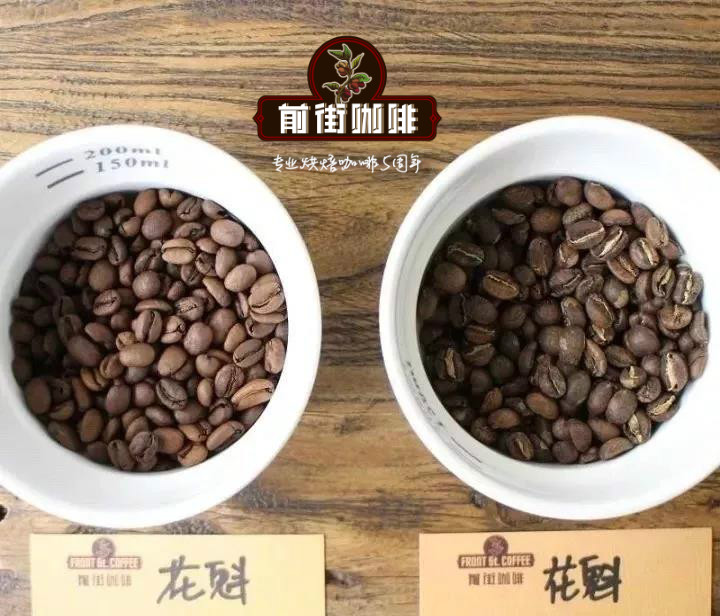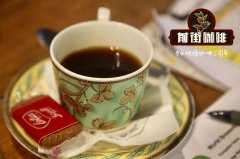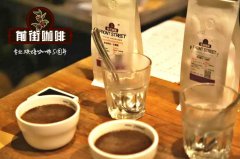The Survival of the Historic Coffee Farmers in the Maraquat Coffee producing area of Terrance-Enzoya & , Kenya

Professional coffee knowledge exchange more coffee bean information please follow the coffee workshop (Wechat official account cafe_style)
The history of the producing areas of TRANS-NZOIA and KEIYO&MARAKWET (Terance-Enzoya-Maraquat) in Kenya
The Agriculture Act was passed by the Mau Mauuprising in the early 1950s. In order to create a family farm business, combining existing farms and cash crops to generate additional income, the bill, also known as the Swynnerton Plan, convened by government officials from the Ministry of Agriculture, is the starting point for shifting coffee production from the UK to Kenyans, which is very beneficial to small farmers. Since their total water income increased from £5.2 million in 1955 to £14 million in 1964, it is obvious that more than half of the extra income comes from coffee.
Kenya gained its independence in 1963 and is now a country that regularly produces quality coffee from a variety of farming sources. Research and development in Kenya is considered excellent. Coffee growers who have expertise in their work the Kenyan auction system should be rewarded by better manufacturers. But the buyer
Corruption in the system that is willing to pay more for high-quality coffee may force growers not to get what they deserve.
Kenya has a grading system for all exported coffee, regardless of whether Lottan coffee can be traced back to its source or not. A grading system that uses coffee grading and quality, as in other countries, will indicate size and may also mean quality. Although size and quality can be linked together, the AA grade is considered to be the best. But recently, I found a very complex and high-quality AB coffee, which contains many AA grades.
E-elephant class or elephant bean, which is the largest and only a small part.
AA-this is a big seed level that can be found online. Coffee beans are larger than an 18-or 22-millimeter grille and are usually the highest price.
AB-this level is a level of two levels. A (raster number 16 or 80 mm) and class B (raster number 15 or 6.20 mm). This grade accounts for 30% of coffee production in Kenya each year.
PB-this is the level of pe??aberries with a single seed, rather than the usual two seeds.
C-this is a level below AB. This grade is usually not seen in high-quality coffee.
TT-An is a small grade obtained from AA,AB and E-rated small coffee beans. This grade of coffee beans is the lightest seed in the choice of seed density.
Tmuri-it contains the minimum level of coffee beans and fragments
The abbreviation MH / ML- comes from the values of "Mbuni Heavy" and "Mbuni Light". Mbuni is the value of the name used to call coffee. The natural process of this grade of coffee is considered low-quality coffee. It usually includes unprocessed and cooked coffee, and they will get very low prices. This grade of coffee accounts for about 7% of Kenya's total coffee production.
Coffee grown in Kenya has large and small farms and sells coffee to local coffee washing stations. This means that we can find the most authentic coffee from a big farm. But many years ago, small farmers also began to produce high-quality coffee. Usually, you will usually find a lot of coffee in the coffee washing station. Even if lottery coffee will come from hundreds of farmers, it will still play an important role in the quality of processed coffee through rated escape stations (such as AA), or factory people, so it is worth a try.
Kenyan coffee has a refreshing, complex berry or fruit flavor, excellent sweet and sour taste.
Planted in Kenya
Two Kenyan coffee varieties are of great interest to the specialty coffee industry. Both species are SL-28 and SL-34, two of 40 species led by Guy Gibson of Scott Lab. Both types of coffee are considered high-quality coffee, mainly in Kenya, but both are sensitive. Rustproof Ruru 11 has many attempts to use antirust crustaceans and is considered to be the first species considered successful by the Kenyan Coffee Commission. Although many specialty coffee buyers do not accept that they have demonstrated the variety of Batian in the past few years, people in the coffee industry are still not very good after being disappointed with Ruiru. However, its quality is getting better and better. And it is hoped that the potential of Batian species will become a good coffee in the future.
Coffee growing area
Population: 44354000
Number of pockets
2013 60 kg: 850000 bags
Coffee production in central Kenya is an important part of the country. The best coffee in Kenya also comes from this region. However, areas such as Kisii,Trans-Nzoia,Keiyo and Marakwet in western Kenya are getting more and more attention.
END
Important Notice :
前街咖啡 FrontStreet Coffee has moved to new addredd:
FrontStreet Coffee Address: 315,Donghua East Road,GuangZhou
Tel:020 38364473
- Prev

The story of Kenyan KISII coffee bean flavor Kenyan Kisi coffee
Professional coffee knowledge exchange more coffee bean information please follow the coffee workshop (Wechat official account cafe_style) Kenya Kisi Story Kenya Keesi Cooperative Coffee Cooperative Network is famous. The system produces significant consistency in planting methods mills and auctions in a network of about 150000 growers most of whom are small-scale farmers. Ken
- Next

Coffee from KIRINYAGA (Kirinaga) in Kenya is famous for its strong taste.
Professional coffee knowledge exchange more coffee bean information please follow Coffee Workshop (Wechat official account cafe_style) Kenya KIRINYAGA (Kirinaga) production area is located on the slopes of Kenya, adjacent to Nyeri, famous for its strong taste, rich layers, solid taste of coffee, and Nyeri recognized as the two best producing areas in Kenya. The hygiene of this area
Related
- Detailed explanation of Jadeite planting Land in Panamanian Jadeite Manor introduction to the grading system of Jadeite competitive bidding, Red bid, Green bid and Rose Summer
- Story of Coffee planting in Brenka region of Costa Rica Stonehenge Manor anaerobic heavy honey treatment of flavor mouth
- What's on the barrel of Blue Mountain Coffee beans?
- Can American coffee also pull flowers? How to use hot American style to pull out a good-looking pattern?
- Can you make a cold extract with coffee beans? What is the right proportion for cold-extracted coffee formula?
- Indonesian PWN Gold Mandrine Coffee Origin Features Flavor How to Chong? Mandolin coffee is American.
- A brief introduction to the flavor characteristics of Brazilian yellow bourbon coffee beans
- What is the effect of different water quality on the flavor of cold-extracted coffee? What kind of water is best for brewing coffee?
- Why do you think of Rose Summer whenever you mention Panamanian coffee?
- Introduction to the characteristics of authentic blue mountain coffee bean producing areas? What is the CIB Coffee Authority in Jamaica?

